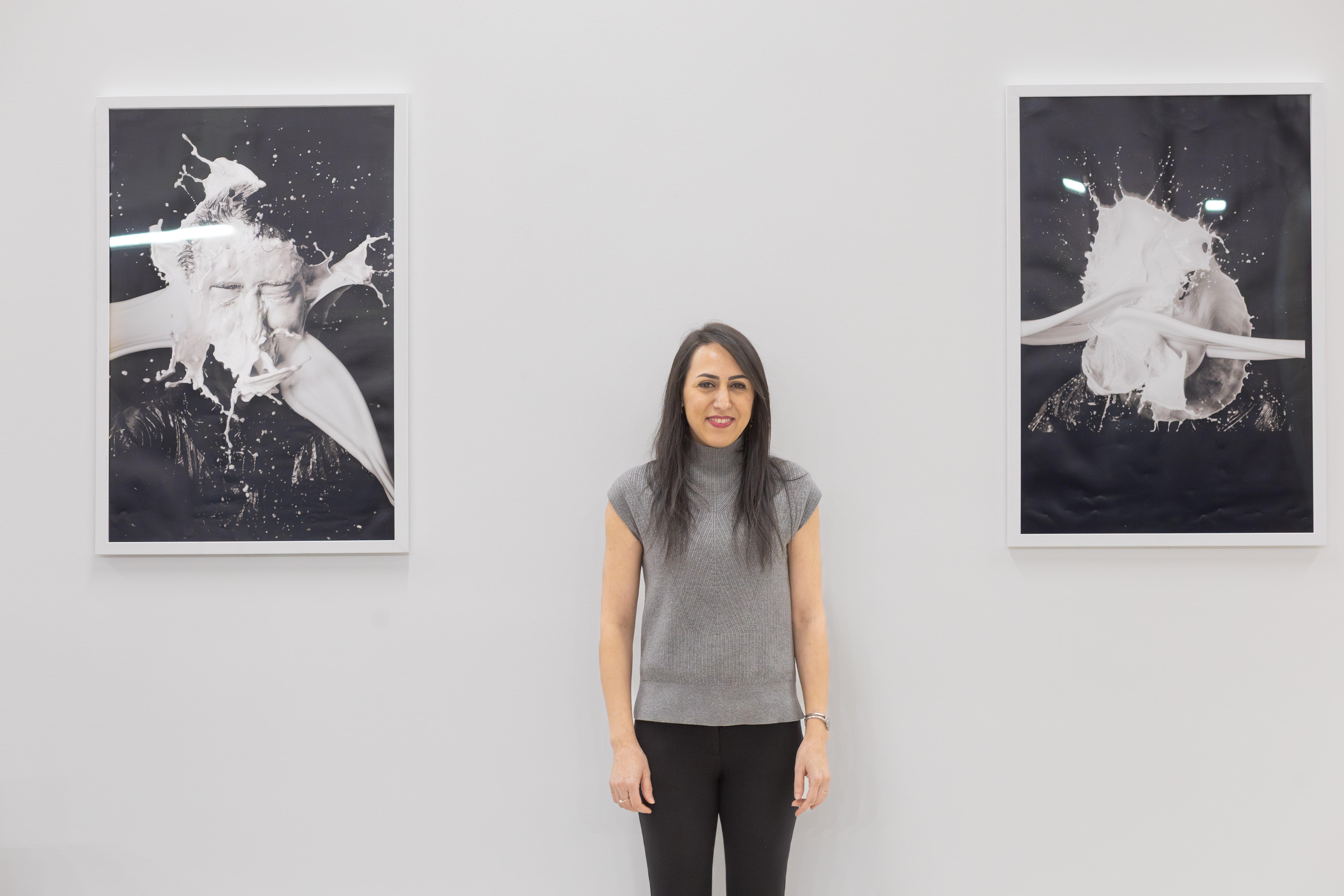Integrating engineering and art can produce powerful visualizations of complex scientific concepts. Fluid dynamics is one field where the two disciplines naturally converge, leading to the artful flow visualizations now on display throughout the Science and Engineering Hall (SEH). The installation, curated by Associate Professor of Mechanical and Aerospace Engineering (MAE) Azar Panah, enables individuals to see the invisible forces flowing around us.
Since 2021, Panah has been the Coordinator of the Gallery of Fluid Motion (GFM) at the American Physical Society’s Division of Fluid Dynamics (APS-DFD). In this role, she organizes national exhibitions that blend technical expertise with artistic insights, including installations at the National Academies of Science, Engineering, and Medicine in Washington, D.C., and The Leonardo Museum of Creativity and Innovation in Salt Lake City.
Panah’s curatorial work builds on her research in fluid dynamics—the study of how liquids and gases flow. Driven by a passion for uncovering beauty in physical phenomena, she uses visual composition, vibrant color, and emotional impact to make complex topics more accessible. The SEH exhibit features 12 pieces that bridge engineering and art to bring fluid dynamics to life, deepen appreciation of the field, and inspire all who pass through.
“I want to show that research can be beautiful. In fact, everything we do in science can be beautiful,” said Panah. “Hopefully, it makes people curious about the topic and encourages them to learn something new, or at the very least, inspires them to explore fluid dynamics further.”
The artwork includes pieces Panah created during her time at Pennsylvania State University, as well as selections from her first GFM show, “Chaosmosis: Assigning Rhythm to the Turbulent.” At GW Engineering, she continues to develop this theme of chaosmosis, a term coined by the philosopher Félix Guattari in the 1990s to describe turning chaos into complexity.
On the B1 level of SEH, 11 pieces are on display. Each shows how fluid motion may appear disruptive and turbulent, but a closer look reveals elegant patterns. One piece captures watercolor mixing with ferrofluid over a thumbnail-sized magnet to create vivid, layered patterns. Another shows the patterns formed as freezing raindrops shatter on a silicon wafer, mimicking the look of broken glass.
While the science behind the works isn’t new, Panah’s artistic lens offers a fresh perspective. For instance, her piece “The Splash of Milk Streams Impacting a Solid Surface” reimagines a classic concept by highlighting the subtle splashes around the surface. “There’s no better way to show the quality of the research we’re doing than to cause people to stop and ask, ‘Wow, what is this?’” she said.

On the third floor, community members and visitors can also view a copy of the composite image from APS-DFD gifted to President Joe Biden in 2023 and displayed at the White House. It now hangs outside the MAE Department’s office, illustrating how, on multiple scales, fluid dynamics plays a role in all fields.
“This beautiful artwork brightens our environment and inspires engineering students and the public alike. It can spark their interest not only in fluid dynamics, which is an important branch of mechanical and aerospace engineering, but also in science and engineering in general,” said MAE Department Chair Michael Plesniak.
From now on, the SEH exhibit will become a standing feature, and Panah plans to begin open calls for submissions from faculty across all engineering disciplines. For biomedical engineers working at the microscale or civil engineers designing striking structural forms, the opportunities to contribute artwork showcasing the inherent beauty of their research from an engineering perspective are plentiful.
“The connection doesn’t have to be forceful,” said Panah. “Fluid dynamics naturally has legs in both art and science, so that comes together organically for flow visualization. I hope this exhibit inspires all of the faculty and students at GW Engineering to think of how their work can also be artistic and how they can better showcase their research to a broader audience.”
In Fall 2025, Panah will also launch a new course on the science and photography of cooking in collaboration with GW’s Global Food Institute. Open to both engineering and non-engineering majors, the course explores the intersection of physics, culinary art, and visual storytelling through the lens of fluid dynamics and photography. Students will conduct experiments and capture dynamic phenomena, such as brewing coffee, rising steam, boiling liquids, and the flow of sauces and foams, to develop their skills in visual presentation and scientific communication.
With this new installation, Panah expands the possibilities for how research is shared publicly at GW Engineering. It invites viewers to see engineering not only as a tool for problem-solving but also as a source of beauty and inspiration. Visitors are encouraged to explore the exhibition in SEH and consider how their work might also flow into the world of visual storytelling.


